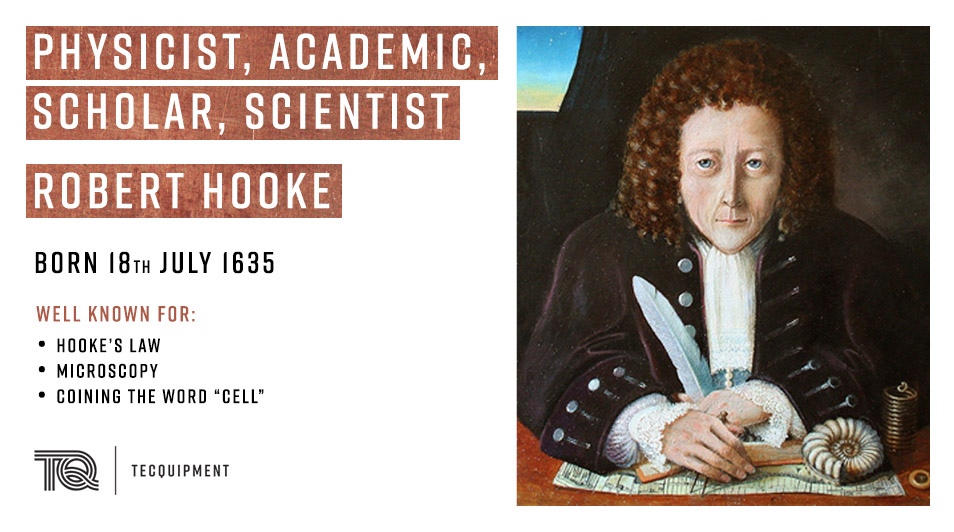To call Dr Robert Hooke a genius is too small a word to describe such a man. Born today exactly 383 years back on the Isle of Wight (28th July 1635 - March 3, 1703), Hooke as a child was sickly, which kept him away from school for long periods. His mind, therefore, remained largely uncluttered by any fixed learnings and as such, flourished. Some argue that he wrote one of the most significant scientific books ever written, Micrographia, and made contributions to human knowledge spanning Architecture, Astronomy, Biology, Chemistry, Physics, Surveying & Map Making, and the Design and Construction of Scientific Instruments. Hooke was the first man to state in general that all matter expands when heated and that air is made up of particles separated from each other by relatively large distances.

Hooke’s Law
Is the theory that, for relatively small deformations of an object, the displacement or size of the deformation is directly proportional to the deforming force/load. Under these conditions, the object returns to its original shape and size when the force is removed.
In mechanics (physics), Hooke’s Law is an approximation of the response of elastic (i.e., spring like) bodies. Elastic behaviour of solids can be explained by the fact that small displacements of their constituent molecules, atoms, or ions from normal positions is also proportional to the force that causes the displacement. It states: the extension of a spring is in direct proportion with the load applied to it.
The deforming force may be applied to a solid by stretching, compressing, bending, or twisting. For example, a metal spring exhibits elastic behaviour according to Hooke’s Law because the small increase in its length when stretched by an applied force doubles each time the force is doubled.

Diagram of Hooke’s Law: The extension of the spring is linearly proportional to the force.
Mathematically, Hooke’s Law states that the applied force F equals a constant k times the displacement or change in length x, or F = kx. The value of k depends not only on the kind of elastic material under consideration but also on its dimensions and shape.
Hooke’s Law may also be expressed in terms of stress and strain:
- Stress is the force per unit area within a material that develops as a result of the externally applied force.
- Strain is the relative deformation produced by stress.
For relatively small stresses, stress is proportional to strain.
Related Theorems
Hooke’s Law is closely linked with:
- Bulk Modulus.
- Shear Modulus.
- Young’s Modulus (read more on the blog from 13th June)
Students can apply Hooke’s Law to practice using the following TecQuipment apparatus:
Hooke’s Law and Spring Rate (SM110)illustrates the extension of springs to find their properties proving Hooke’s Law and the basic rules of spring design.
Spring Test Kit (ES19) demonstrates the characteristics of coiled springs and how to test them, proving Hooke’s Law.
Coil Spring (SM1000F) fits in the Universal Testing Machine (SM1000) for demonstrating and studying compression spring tests on a coiled spring.
Battle of the Genius’
In his later years, Hooke became increasingly grumpy, engaging in a number of feuds with other scientists, often about who said what first. Hooke’s most famous feud was with Sir Isaac Newton. Hooke thought Newton had not acknowledged Hooke’s ideas about gravity sufficiently.














